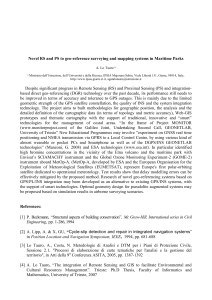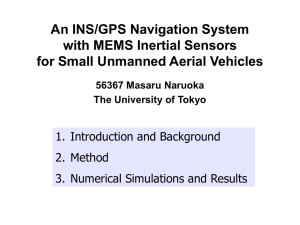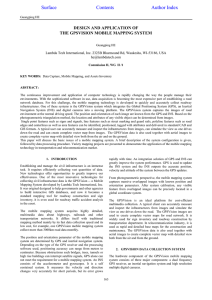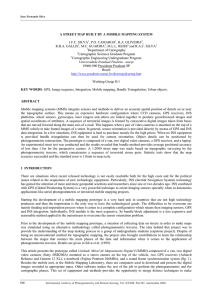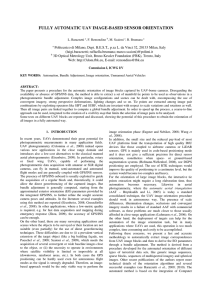street surveying by photogrammetric traverse
advertisement
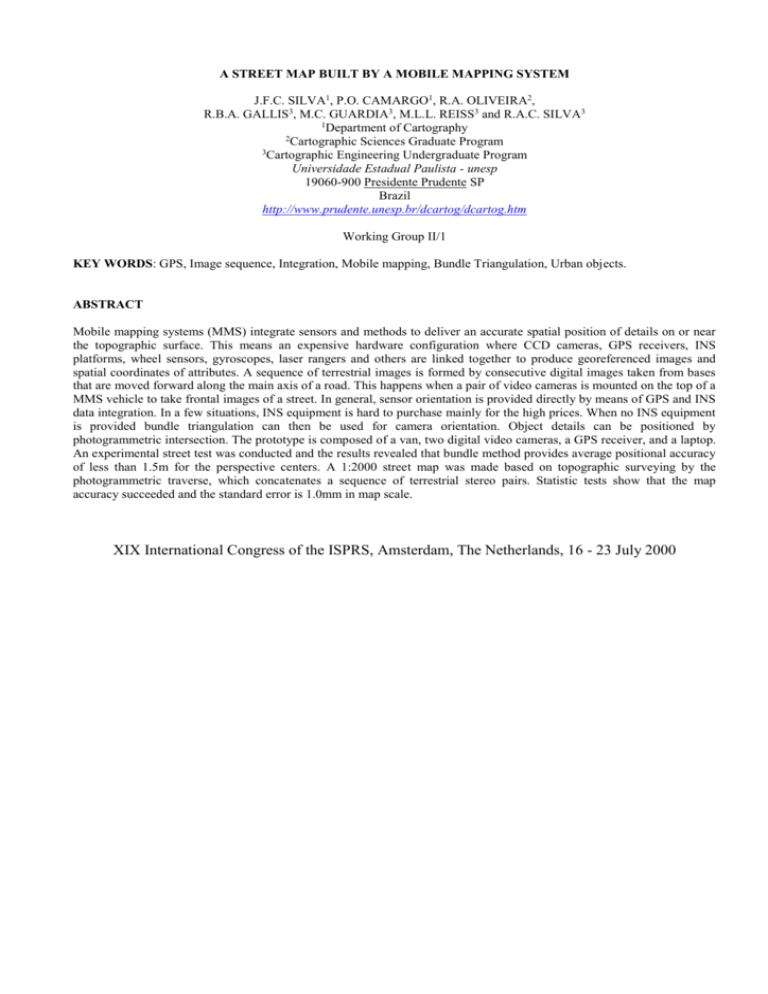
A STREET MAP BUILT BY A MOBILE MAPPING SYSTEM J.F.C. SILVA1, P.O. CAMARGO1, R.A. OLIVEIRA2, R.B.A. GALLIS3, M.C. GUARDIA3, M.L.L. REISS3 and R.A.C. SILVA3 1 Department of Cartography 2 Cartographic Sciences Graduate Program 3 Cartographic Engineering Undergraduate Program Universidade Estadual Paulista - unesp 19060-900 Presidente Prudente SP Brazil http://www.prudente.unesp.br/dcartog/dcartog.htm Working Group II/1 KEY WORDS: GPS, Image sequence, Integration, Mobile mapping, Bundle Triangulation, Urban objects. ABSTRACT Mobile mapping systems (MMS) integrate sensors and methods to deliver an accurate spatial position of details on or near the topographic surface. This means an expensive hardware configuration where CCD cameras, GPS receivers, INS platforms, wheel sensors, gyroscopes, laser rangers and others are linked together to produce georeferenced images and spatial coordinates of attributes. A sequence of terrestrial images is formed by consecutive digital images taken from bases that are moved forward along the main axis of a road. This happens when a pair of video cameras is mounted on the top of a MMS vehicle to take frontal images of a street. In general, sensor orientation is provided directly by means of GPS and INS data integration. In a few situations, INS equipment is hard to purchase mainly for the high prices. When no INS equipment is provided bundle triangulation can then be used for camera orientation. Object details can be positioned by photogrammetric intersection. The prototype is composed of a van, two digital video cameras, a GPS receiver, and a laptop. An experimental street test was conducted and the results revealed that bundle method provides average positional accuracy of less than 1.5m for the perspective centers. A 1:2000 street map was made based on topographic surveying by the photogrammetric traverse, which concatenates a sequence of terrestrial stereo pairs. Statistic tests show that the map accuracy succeeded and the standard error is 1.0mm in map scale. XIX International Congress of the ISPRS, Amsterdam, The Netherlands, 16 - 23 July 2000
